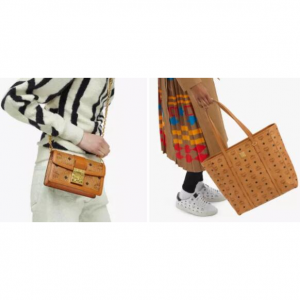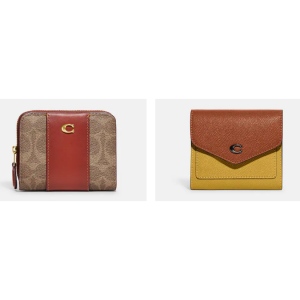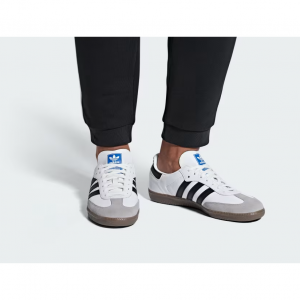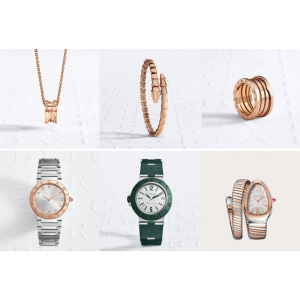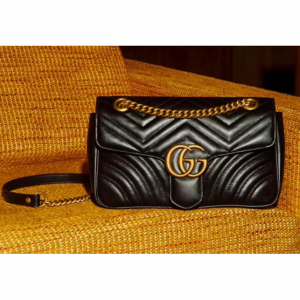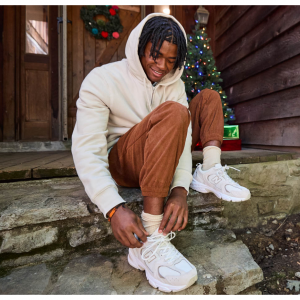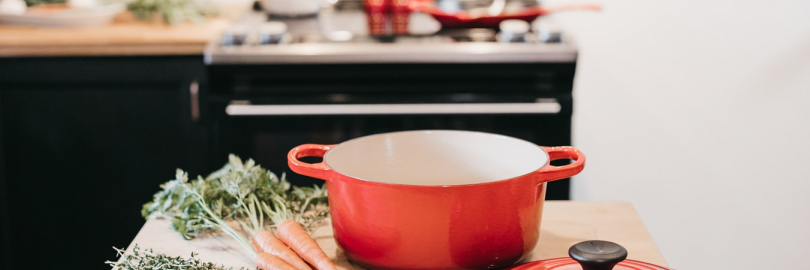
Le Creuset vs. Staub vs. Lodge vs. Chasseur vs. Emile Henry: Which Owns the No.1 Dutch Oven Brand?
A Dutch oven is an essential piece of cookware for every kitchen. The heavy-bottomed, lidded pot can do pretty much everything, from baking bread and simmering soups and stews to frying chicken.Dominating the French cookware industry and specialising in enamelled cast iron are three brands - Le Creuset, Staub and Chasseur. And many people also choose Lodge or Emile Henry.At first glance, it is rather difficult to tell the difference of the five brands.What is the best brand of enameled cast iron cookware?What brand of Dutch oven is best?What to look for when buying a Dutch oven?Before diving into their similarities and differences, it's important to go a little deeper into who and what these brands are.Choosing between them requires a closer look and this guide will help you figure out which one is best for you.
What Is a Dutch Oven?
Dutch ovens (also called French ovens) are large cast-iron pots—often found with a brightly colored enamel coating—making them pretty and practical heavy-weight helpers in the kitchen. Because of its material, Dutch ovens heat evenly and maintain heat very well. This makes Dutch ovens suitable for browning, braising, frying, baking and stewing on a stovetop, grill or in the oven. They can go directly from the stove top to the oven without concern.
Types of Dutch Ovens
Cast Iron
This is the material of choice for the top-rated Dutch oven brands, due to its ability to retain and distribute heat. Not only is cast iron highly durable, but it is also suitable for use on almost any cooktop (including induction), and directly over open fires such as atop a barbecue grill or over a campfire.
Enameled Cast Iron
Enameled cast iron is cast iron that has a vitreous enamel glaze applied to the surface.The enamel helps to protect your kitchen equipment from all sorts of unwanted things, including rust, while also adding a new element to your cooking process, as enamel cast iron is wonderful for slow cooking.This is a very popular material for Dutch ovens, bringing an element of rustic European design to your kitchen.
Ceramic
This type of cookware tends to be more affordable than enameled cast iron but boasts a similarly pleasing aesthetic for your kitchen. Made of high-fired clay, these pieces are also PFOA- and PTFE-free, non-reactive, and resistant to thermal shock. However, they are more prone to chipping and breakage than cast iron ovens.
Stainless Steel
While traditional Dutch ovens are made of cast iron, there are also Dutch oven-shaped vessels made of stainless steel, a durable, non-reactive material that is commonly used for cookware. Well-constructed stainless steel Dutch ovens stand up well to daily use and are easy to maintain. However, they will not hold heat as well as their cast iron counterparts.
Cast Aluminum
This is another excellent option for a Dutch oven that is lighter than cast iron. These ovens are made by casting molten aluminum in a mold, creating a hard and durable oven that is non-reactive and less susceptible to warping or damage. Cast aluminum also can be used on electric and gas stovetops and in the oven, has better heat conductivity than stainless steel, and is naturally nonstick. This material is generally very low-maintenance because it can be soaked and washed in the dishwasher and doesn’t need to be seasoned to maintain its surface.
Money Saving Tips:
When you buy Dutch Oven online, don't forget to sign up at Extrabux (What is Extrabux?). Then you can get cashback from Extrabux! Sign-Up Bonus: Free to join it & get $20 welcome bonus!
About Each Brand
Le Creuset

Le Creuset is known for its beautiful, well-crafted, and versatile enamel Dutch ovens. It created its first one in 1925, and still makes all of its Dutch ovens in the same foundry in France.
To manufacture their cast-iron cookware, the Le Creuset foundry uses standard sand casting methods. After hand finishing, items are sprayed with at least two coats of enamel. The enamel becomes resistant to damage during normal use. Currently, all Le Creuset cast-iron cookware is still manufactured in the company's foundry in Fresnoy-le-Grand.
Their continued development and largest colour range offering for any cookware manufacturer have seen it establish itself as the leader in enamelled cast iron cookware with an estimated 65% global market share.
Pros:
Handmade in France, with strict oversight and quality standards.
Have have a 3 layer enamel finish.
Widely considered a leader in the business.
Comes in a wide range of colors (about 17), most of which are bright.
Comes in a wide variety of sizes and shapes, from 1 quart to 13 quarts and everything in between, plus oval shapes and shallow brasiers.
White enameled interior allows you to see cooking progress easier.
Plastic knobs don’t get hot during stovetop cooking.
Roomiest handles of all the brands, which make oven-to-table transport easy.
Excellent lifetime warranty program.
Cons:
Expensive (the average cost for a 5 1/2-quart pot is about $325).
Light interior is easily scratched by metal tools and stained by food (although you can eliminate some stains with some tough cleaning).
Plastic knobs can’t be used in the oven with high heat, but you can pay about $20 for a metal replacement.
Staub

Staub is the second youngest of the three French cookware brands, originally founded in 1974 by Francis Staub in the Alsace region of France. In 2008 the Staub brand was acquired by Zwilling J.A Henckels Group, one of the world's oldest and largest kitchen knife manufacturers.
Their manufacturing process, similar to Le Creuset, uses an individual sand mould that is used to cast the iron to form the cookware's shape. From there, any unevenness is removed before two to three enamel layers are applied to the internal and external layers; then it is heat-treated at 800°C for 30 minutes, binding the layers together along with the enamel.
Staub products perfectly combine traditional craftsmanship with state-of-the-art technology. Famous restaurateurs from all over the world value the high quality of Staub cookware. This is why StaubB is not only used in the kitchen of prestigious restaurants, but also finds a home in the domestic kitchen as amateur chefs and home cooks prepare, cook and serve at the dining table with Staub.
Pros:
Handmade in France, with strict oversight and quality standards.
Widely considered a leader in the business.
Comes in colors that are more earthy than bright.
Dark, black matte enameled interior doesn’t stain, is more effective at browning meat evenly, and can build up a nonstick “seasoning” over time.
Generally at least $25 cheaper than Le Creuset, and easier to find on sale.
Knobs are metal instead of plastic, and can come in whimsical animal shapes.
Bumps on the underside of the lid allow condensation to drip into the center of the pot, thereby “self-basting” the contents (most effective when used on the stove instead of the oven).
Tightest-fitting lid of all the brands, which maintains even heat inside and reduces evaporation.
Excellent lifetime warranty program.
Cons:
Although it’s often cheaper than Le Creuset, it’s still quite expensive at about $300 for a 5.5-quart pot.
Comes in less colors than Le Creuset (about nine), although more than other brands.
Dark matte enamel interior makes it a little harder to monitor the browning process.
Spikes under the lid make cleanup more difficult.
Very tight-fitting lid means you’ll likely have to reduce the cooking liquids to concentrate the flavors.
A little heavier than Le Creuset and the handles are not as roomy.
Lodge

Founded in 1896 by Joseph Lodge, Lodge Manufacturing is one of America's oldest cookware companies in continuous operation. It is still owned and managed by the descendants of the Lodge family. Most cast iron sold by Lodge is produced in its foundry in South Pittsburg, which has been in operation since the company was founded.
Backed by over 120 years of experience, each piece of Lodge cookware is crafted for durability and versatility. Cast-iron cookware has remained popular, despite being a little finicky about seasoning and rust.
Pros:
Independent reviews consider it about as durable as Le Creuset and Staub.
Far cheaper than Le Creuset and Staub, and often cheaper than most other brands too. Expect to pay about $50 for a 6-quart pot at stores like Target, or around $90 at some other stores.
Knobs are metal like Staub.
Interior is light colored-enamel like Le Creuset.
Handles are slightly more roomy than Staub (but not as roomy as Le Creuset).
Interior is very rounded, almost like a wide wok, so nothing gets caught in the corners.
Produced by an independent company based in the U.S.
Comes with a generous lifetime warranty.
Cons:
Not available in as many colors (about five) and sizes as Le Creuset and Staub, although the sizes it comes in are the most versatile.
Light-colored interior can stain.
Very rounded interior results in a smaller base diameter, which means you’ll have to brown meat in smaller batches.
Heavier than Le Creuset and Staub.
Chasseur

Chasseur, French for 'hunter', is the youngest of the five brands. Chasseur manufactures their cast iron cookware at the Invicta foundry and enamelling plants, which have been around since 1924 and are located in Donchery, the French Champagne Ardenne region, famous for its food and wine. The Invicta foundry creates more than just the Chasseur French Oven with production lines of cast iron decorations, furniture, barbecues and fireplace/heating ornaments. Despite the wide range of goods manufactured at this location, Invicta keeps everything in-house, controlling every part of the manufacturing process from initial design, processing of materials, foundry treatment, the finishes, as well as the marketing and distribution of their end products.
Pros:
The most affordable between the three brands.
Handcrafted in France.
A wide array of eye-catching colours to choose from.
Lighter interior enables you to gauge your cooking progress.
Offers both French Oven and shallow Round Casserole.
Stainless steel knob enables you to pop it into the oven.
A wide selection of sizes that range between 10cm to 32cm.
an environmentally friendly option, they use up to 80% recycled material and the cast iron pots are 100% recyclable.
Cons:
Only have a 2 layer enamel finish. The the double enamel layered coating is slightly less durable compared to the other brands.
Chasseur's French Ovens are heavier.
Chasseur's handles are a little smaller compared to other brands.
Emile Henry

Founded in 1850, and located in Marcigny, a small town in the province of Burgundy, France, Emile Henry has established a worldwide reputation for manufacturing the finest quality ceramic ovenware, gourmet cooking products, and bakeware products. Still owned and operated by the Henry family, the company today manufactures all of their new cooking products from Burgundy clay using their proprietary High Resistance Oven Ceramic state-of-the-art manufacturing process.
Emile Henry ceramic cookware combines quality with affordability. Although it doesn’t come in a huge amount of color options like Le Creuset or Staub. However, Emile Henry still makes their ceramics in France using that fine Burgundy clay and use traditional methods for their cookware without the high price. These are great reasons to choose Emile Henry ceramic cookware.
Pros:
Handmade in France.
The interior has a nice soft gradient.
The clay construction is what makes it lighter.
The dutch oven belongs in the Flame Ceramic category. These pots can be used at temperature of 930 degree Fahrenheit.
The shape of the dutch oven is pretty well designed.
The interior has a nice soft gradient. This is perfect for when you are making sauces.
Cons:
The handle is not very well designed. It is two tabs on either side of the pot. It does not provide much texture, nor can you hook your hand through a loop.
Pots with sharp corner can cause food to get stuck.
Which Brand of Dutch Oven is Best?
As to which brand is the best for you - it's really up to your personal preference. There are far more similarities between these brands than there are differences.
Those with a higher budget and are familiar cooking with cast-iron would have Le Creuset as their prime choice. Le Creuset's vast colour palette and premium background makes it a more attractive option.If you are looking for luxury (and lots of colour choice) go for Le Creuset.
If you are looking for value for money go for Chasseur,but does Chasseur offer less because the product is cheaper? Absolutely not. Chasseur is a great brand, it is more affordable and offers a perfect place to start your collection of cast iron cookware without breaking the bank. You can get value for money and a reliable french oven that will last a lifetime.
For those that are fan of the basting function and are afraid of the soft enamel finish of the cookware staining, we recommend Staub for their signature matte interior finishes which brand loyalists claim is what sets Staub apart from the other French brands.
Whether you want to invest in an expensive Dutch oven or opt for a more economical option, make sure you buy one that’s made of enameled cast-iron. It will brown and braise more effectively and perform admirably on both the stovetop and the oven.
What to Look for When Buying a Dutch Oven?
Material
Dutch ovens are most often made of cast iron, whether enameled or not. But you can also find these pots in ceramic, stainless steel, and aluminum varieties. As we'll discuss later, the material impacts everything from heating capacity and reactivity to durability, weight, and maintenance.
Size
Dutch ovens can be found in sizes as small as ¼-quart (perfect for individual servings of French onion soup or cobbler) and as large as 13-quart, great for large batches of chili or braising pork belly for a crowd. If you have a large family or regularly cook for a big crowd, consider purchasing a 7-to 8-quart Dutch oven or, alternatively, a 3-to 4-quart pot for nights when you’re only cooking for a few.
Since a Dutch oven will be put into the oven, you will also need to ensure that the size fits on the rack. Apart from the width, you also need to take into account the height with the lid on. If you have a small oven, you might have a problem fitting a covered Dutch oven inside.
Price
Most Dutch ovens are between $40-350, which is a huge range. Price is influenced by brand, materials used, size and where it’s purchased from. French-made enameled cast iron ovens can be quite pricey, averaging around $250 to $350 for a 6-quart model.Other materials will range in cost depending on where they are made and how heavy they are: imported cast aluminum and stainless steel will typically cost less than European-made versions.
Heating Capacity
Traditional uncoated cast iron ovens are built to withstand use on any cooktop, as well as an open flame. Bare cast iron can typically handle over 500 degrees; high-fired ceramic is rated to about 500 degrees; enameled cast iron can be heated to around 450 degrees before it could start to damage the enamel coating. Stainless steel and cast aluminum should be used at medium and lower temperatures.
Lids
A Dutch oven’s lid is very important: well-fitting lids will help keep meats from drying out and keep stews and sauces from evaporating too quickly. Most ovens will come with a lid in the same material as the rest of the vessel, but you may find a Dutch oven with a tempered glass lid that allows you to visually monitor your food.
Shape
The two most common shapes for Dutch ovens are round and oval. Round is the most popular shape: it sits well on a single burner for even heating, is often deeper, and the shape also lends itself well to smooth stirring. An oval-shaped oven is usually shallower and wider than round versions; it's ideal for cooking longer cuts of meat in the oven. On the stovetop, an oval shape doesn’t distribute heat as evenly as round ovens, but you’ll barely notice a difference if you preheat it in the oven before use.
Style
There are a ton of options when it comes to the color and shape of a Dutch oven! Some brands also offer patterned Dutch ovens or lids with decorative handles.
Warranty
Many major manufacturers offer some warranty against defects in material and workmanship. Le Creuset and Lodge offer a limited lifetime warranty, with other brands like Emile Henry and Staub giving anywhere from a 10- to 30-year warranty. Before you buy, be sure to check on the manufacturer’s terms and warranty coverage to make sure it’s what you need.

Extrabux is an international cashback shopping site, offering up to 30% cashback from 10,000+ Stores!
B&H Photo Video, Dyson, Woodland Direct, Ooni UK, Bed Bath and Beyond, TUSHY, Zoro, Anthropologie, 4seating.com, GDF Studio, simplehuman, Appliance Parts Pros, etc.
Join to get $20 welcome bonus now! (How does Welcome Bonus work?)
Recommendation
-
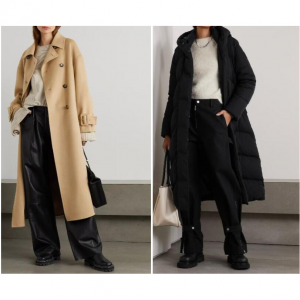
10 Best & Stylish Winter Coats for Women on NET-A-PORTER in 2024
-

Top & Best 12 Sneaker Apps/Websites for Raffles, Releases & Restocks in 2024
-

7 Best Gift Card Exchange Sites - Buy, Sell and Trade Discount Gift Card Safely and Instanly!
-

Top 9 Professional Skincare Brands for Licensed Estheticians 2024
-

13 Best Luxury Online Shopping Sites with Highest Cashback in 2024 (Coupon Code+Sale+14% Cashback)
Up to 14% Cashback!






